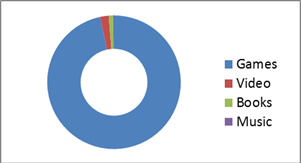
How has the last year been for publishers?
2014 started on a relatively positive note but as the political situation started getting worse, things deteriorated: summer was practically a dead season (as usual) and by autumn there was a real sense of everything going wrong, affecting demand for books and reading as a whole.
Despite this, at Alpina we managed to grow sales by 11%, albeit lower than we were hoping for initially. Things picked up at the end of the year. Firstly, people remembered that the best present is not an iPhone but a book and secondly, due to the fragile jobs market, many looked to self-help and business books to acquire new knowledge and skills.
What kind of titles are doing best, both at Alpina and in the wider Russian publishing market?
Books for young parents on topics like early development, raising children and how to understand your baby are selling very well. So are titles on cognitive skills – brain and memory training, speed reading etc. A trend that has blossomed during the last year is around slowness, meditation, the joy of simple living etc. Russians have become very interested in healthy lifestyles, so titles like Tom Rath’s Eat, Move, Sleep are doing very well.
Books on startups and entrepreneurship, such as Peter Thiel’s Zero to One or Eric Ries’s The Lean Startup, have sold rather well, although business books in general are not selling in the numbers we’d hoped for due to the economic environment.
Alpina’s bestsellers have been the same for the last few years: Kindergarten Is Too Late by Masaru Ibuka, The Seven Habits of Highly Effective People by Stephen Covey and Atlas Shrugged by Ayn Rand.
Other bestsellers have been two books by Russian authors, one on memory training and the other on beauty myths. Interestingly, we’re seeing increased demand for visually appealing, full-colour, richly illustrated books in custom formats. We previously assumed that high production costs would be a limiting factor but it’s clear that readers are migrating from pure-text to visually original books.
What can you tell us about average retail prices in your sector (adult non-fiction)?
In 2014, the average retail price of a 300-page black-and-white book in hardcover in adult non-fiction was 500 rubles – in current exchange rates that’s less than 7 euros. For full-colour books it was about twice that. People seem eager to pay more to get brighter books. I mentioned our bestsellers on memory training and beauty myths: visual appeal played a major part in their sales success, complementing their fantastic content.
On an operational level, how is the economic situation impacting publishers?
Print runs are decreasing – a year ago an average was 3,000 copies, now it is usually no more than 2,000. The cost for each copy is getting higher – production costs are rising, imported paper is becoming prohibitively expensive – and thus print-on-demand is becoming a more attractive option. In theory it allows publishers to reduce storage expenses and operate ‘just in time’ – they send a product list to bookshops, who order the books they want, publishers print the exact quantity ordered and move them directly from the printing house to the bookshop. A few difficulties (such as technology limitations) remain but the premise of print-on-demand is very attractive.
Another problem created by the rouble’s fall is the price we pay for foreign rights. As a result, we’re focusing on finding more talent from within the country.
How big a problem is piracy?
It’s a huge issue. A significant chunk of Russia’s population believes that content should be free. The fact is that one day after we publish a title, it’s being downloaded via torrent sites.
In some cases, piracy seems not to affect print book sales – perhaps readers of electronic and print versions are different people, or perhaps they skim through a low-quality e-file before buying a print book from a shop. The majority of our titles are available in epub2 format in an online library, available for corporate clients on subscription. For retail customers we have Android- and iOS-apps. Also, we distribute our e-books (without any DRM) via all possible online retail channels.
How do you view the potential of e-books?
The culture of buying electronic files is only starting to evolve, at least where books and music are concerned. The graphs below demonstrate the share of digital content market revenues in 2012 in Russia (on the left) and the United States (on the right). (data from J’son & Partners Consulting)).


Below, you can see how ebook sales revenues in Russia have developed since 2011 (figures in million rubles, from Federal Agency for Press and Mass Communications).

This year, we have started developing interactive e-books. We strongly believe that our readers want knowledge content in the most convenient form possible. The space and content opportunities for print and traditional e-books are limited, but adding extra content such as video, infographics, tests, audio, animation, etc not only entertains the reader, it adds value by making knowledge acquisition much easier.
The main challenges in this respect are to meet reader expectations (very few of whom know what to expect from an interactive e-book), to maintain high-quality and to spend as little on production as possible – so that we can set a fair price which readers will accept to pay.
While this is a big challenge, to my mind it’s one of the biggest opportunities for book publishers today – being able to organize and deliver the best, most relevant, most valuable, content in the exact form the reader needs. If we manage to publish good books in the right form, they will always find their readers.
Interested in learning more about Russia’s publishing market? Contact Irina Gusinskaya directly here.

